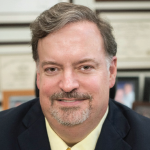In addition, we’re working on increasing diversity within the volunteer leadership of the ACR in terms of race/ethnicity, sex/gender and different practice communities, including getting more practitioners, clinicians and members of the full interprofessional team from outside of the academic sector to be part of the ACR leadership.
TR: What do you see as crucial for the future of the ACR?
Dr. Saag: Diversifying the ACR’s revenue streams is more critical than ever. We anticipate that, as we move forward and offer both in-person and virtual educational opportunities, it will be necessary to modify our business models to meet our learners’ expectations. That means we need to think about doing other things to support the organization, such as possible new financial models for the ACR’s qualified clinical data registry (RISE) that would provide additional value for the people who are contributing the data, and benefit our organization as a whole.
Another big challenge going forward is growing academic research and investigation in rheumatology. We need to maintain strong research within our field and continue to advance science in areas such as precision medicine, informatics in clinical care and outcomes research.
We also should be thinking about how we can be a little bit more like the oncologists in doing consortia research. Rheumatology encompasses a lot of very rare diseases, so we need to—in a more facile way—be able to turn a clinical encounter into a research encounter, so patients get enrolled in collaborative clinical trials that, optimally, are supported by the federal government or another entity that doesn’t have a financial stake in the outcome of the research.
TR: What do you see as some of the biggest obstacles for rheumatologists in the coming year, or even in the long term, and what are the paths forward?
Dr. Saag: The biggest immediate question is: How do we get back together? Rheumatologists are a very social group, and a lot of what the ACR does is bring people together in person at both the volunteer leadership level and at the annual meeting. We need to start figuring out how to get back together and have more in-person ways to share knowledge. It may be that we shift our model a little bit, so instead of having just a huge annual meeting be the centerpiece, we might consider returning to more regional meetings, which were very popular for many, many years. That’s something we’re going to be figuring out over the next few years, hopefully sooner rather than later.

